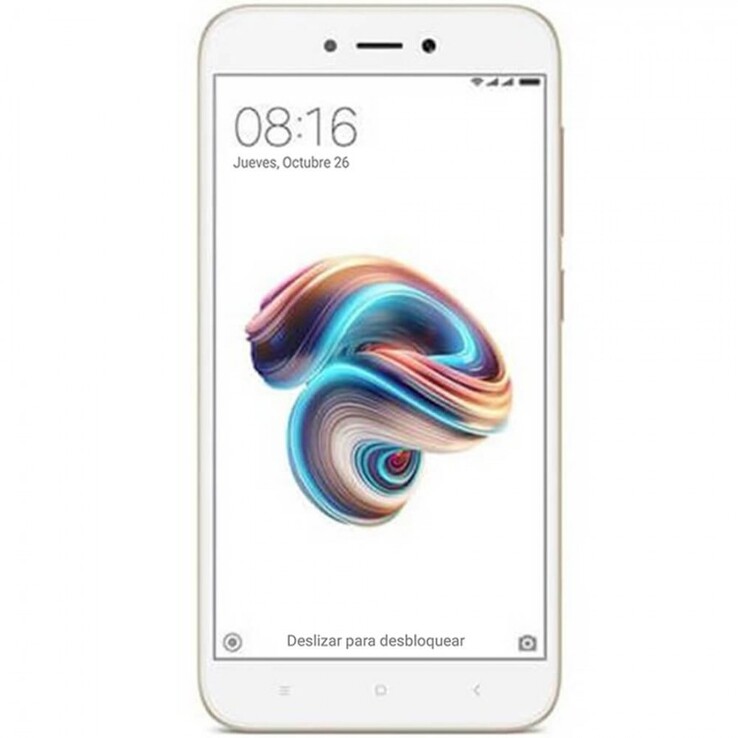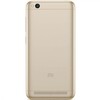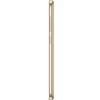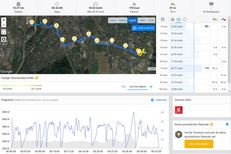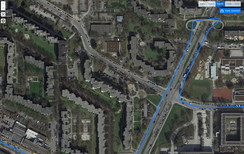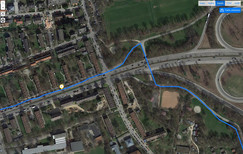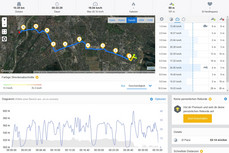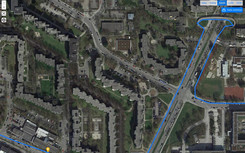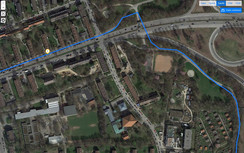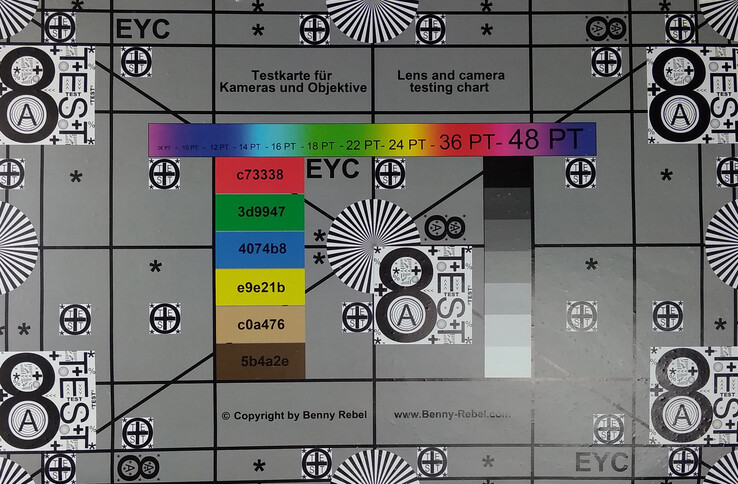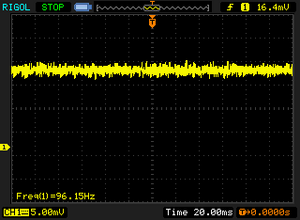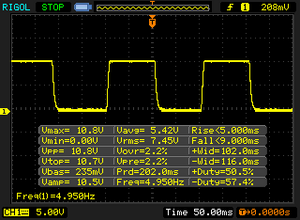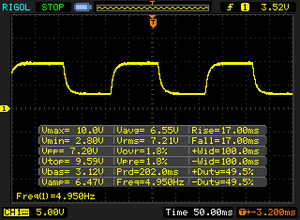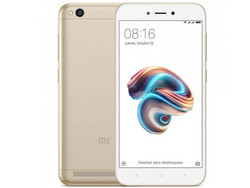Breve Análise do Smartphone Xiaomi Redmi 5A
Os Top 10
» Os Top 10 Portáteis Multimídia
» Os Top 10 Portáteis de Jogos
» Os Top 10 Portáteis Leves para Jogos
» Os Top 10 Portáteis Acessíveis de Escritório/Empresariais
» Os Top 10 Portáteis Premium de Escritório/Empresariais
» Os Top 10 dos Portáteis Workstation
» Os Top 10 Subportáteis
» Os Top 10 Ultrabooks
» Os Top 10 Conversíveis
» Os Top 10 Tablets
» Os Top 10 Smartphones
» A melhores Telas de Portáteis Analisadas Pela Notebookcheck
» Top 10 dos portáteis abaixo dos 500 Euros da Notebookcheck
» Top 10 dos Portáteis abaixo dos 300 Euros
Size Comparison
| Networking | |
| iperf3 transmit AX12 | |
| Umidigi A1 Pro | |
| Nokia 2 | |
| Huawei Y6 2018 | |
| Xiaomi Redmi 5A | |
| Honor 7A | |
| iperf3 receive AX12 | |
| Umidigi A1 Pro | |
| Nokia 2 | |
| Huawei Y6 2018 | |
| Xiaomi Redmi 5A | |
| Honor 7A | |
| |||||||||||||||||||||||||
iluminação: 84 %
iluminação com acumulador: 503 cd/m²
Contraste: 689:1 (Preto: 0.73 cd/m²)
ΔE ColorChecker Calman: 5.44 | ∀{0.5-29.43 Ø4.78}
ΔE Greyscale Calman: 6.8 | ∀{0.09-98 Ø5}
96.8% sRGB (Calman 2D)
Gamma: 2.451
CCT: 6590 K
| Xiaomi Redmi 5A IPS, 1280x720, 5" | Honor 7A IPS, 1440x720, 5.7" | Umidigi A1 Pro IPS, 1440x720, 5.5" | Nokia 2 IPS, 1280x720, 5" | Huawei Y6 2018 IPS, 1440x720, 5.7" | |
|---|---|---|---|---|---|
| Screen | 33% | 37% | 7% | 13% | |
| Brightness middle (cd/m²) | 503 | 417 -17% | 594 18% | 527 5% | 483 -4% |
| Brightness (cd/m²) | 499 | 395 -21% | 570 14% | 503 1% | 460 -8% |
| Brightness Distribution (%) | 84 | 88 5% | 86 2% | 91 8% | 88 5% |
| Black Level * (cd/m²) | 0.73 | 0.18 75% | 0.22 70% | 0.68 7% | 0.4 45% |
| Contrast (:1) | 689 | 2317 236% | 2700 292% | 775 12% | 1208 75% |
| Colorchecker dE 2000 * | 5.44 | 6.46 -19% | 6.63 -22% | 5.3 3% | 5.8 -7% |
| Colorchecker dE 2000 max. * | 10.01 | 10.72 -7% | 13.99 -40% | 9.2 8% | 12.6 -26% |
| Greyscale dE 2000 * | 6.8 | 5.8 15% | 9.2 -35% | 5.8 15% | 5 26% |
| Gamma | 2.451 90% | 2.423 91% | 2.24 98% | 2.12 104% | 2.6 85% |
| CCT | 6590 99% | 7839 83% | 8663 75% | 7894 82% | 7709 84% |
| Colorchecker dE 2000 calibrated * | 4.42 |
* ... menor é melhor
Cintilação da tela / PWM (modulação por largura de pulso)
| Tela tremeluzindo / PWM não detectado | |||
[pwm_comparison] Em comparação: 53 % de todos os dispositivos testados não usam PWM para escurecer a tela. Se PWM foi detectado, uma média de 8111 (mínimo: 5 - máximo: 343500) Hz foi medida. | |||
Exibir tempos de resposta
| ↔ Tempo de resposta preto para branco | ||
|---|---|---|
| 14 ms ... ascensão ↗ e queda ↘ combinadas | ↗ 5 ms ascensão | |
| ↘ 9 ms queda | ||
| A tela mostra boas taxas de resposta em nossos testes, mas pode ser muito lenta para jogadores competitivos. Em comparação, todos os dispositivos testados variam de 0.1 (mínimo) a 240 (máximo) ms. » 33 % de todos os dispositivos são melhores. Isso significa que o tempo de resposta medido é melhor que a média de todos os dispositivos testados (20.2 ms). | ||
| ↔ Tempo de resposta 50% cinza a 80% cinza | ||
| 34 ms ... ascensão ↗ e queda ↘ combinadas | ↗ 17 ms ascensão | |
| ↘ 17 ms queda | ||
| A tela mostra taxas de resposta lentas em nossos testes e será insatisfatória para os jogadores. Em comparação, todos os dispositivos testados variam de 0.165 (mínimo) a 636 (máximo) ms. » 45 % de todos os dispositivos são melhores. Isso significa que o tempo de resposta medido é semelhante à média de todos os dispositivos testados (31.6 ms). | ||
| AnTuTu v6 - Total Score (classificar por valor) | |
| Xiaomi Redmi 5A | |
| Honor 7A | |
| Umidigi A1 Pro | |
| Nokia 2 | |
| Huawei Y6 2018 | |
| Média Qualcomm Snapdragon 425 (MSM8917) (29054 - 39106, n=17) | |
| AnTuTu v7 - Total Score (classificar por valor) | |
| Xiaomi Redmi 5A | |
| Honor 7A | |
| Umidigi A1 Pro | |
| Huawei Y6 2018 | |
| Média Qualcomm Snapdragon 425 (MSM8917) (32557 - 46710, n=10) | |
| PCMark for Android | |
| Work performance score (classificar por valor) | |
| Xiaomi Redmi 5A | |
| Honor 7A | |
| Umidigi A1 Pro | |
| Nokia 2 | |
| Huawei Y6 2018 | |
| Média Qualcomm Snapdragon 425 (MSM8917) (3681 - 5253, n=17) | |
| Work 2.0 performance score (classificar por valor) | |
| Xiaomi Redmi 5A | |
| Honor 7A | |
| Umidigi A1 Pro | |
| Nokia 2 | |
| Huawei Y6 2018 | |
| Média Qualcomm Snapdragon 425 (MSM8917) (2829 - 3831, n=18) | |
| GFXBench 3.0 | |
| on screen Manhattan Onscreen OGL (classificar por valor) | |
| Xiaomi Redmi 5A | |
| Honor 7A | |
| Umidigi A1 Pro | |
| Nokia 2 | |
| Huawei Y6 2018 | |
| Média Qualcomm Snapdragon 425 (MSM8917) (3.7 - 11, n=18) | |
| Média da turma Smartphone (18 - 166, n=159, últimos 2 anos) | |
| 1920x1080 1080p Manhattan Offscreen (classificar por valor) | |
| Xiaomi Redmi 5A | |
| Honor 7A | |
| Umidigi A1 Pro | |
| Nokia 2 | |
| Huawei Y6 2018 | |
| Média Qualcomm Snapdragon 425 (MSM8917) (1.3 - 3, n=17) | |
| Média da turma Smartphone (12 - 606, n=157, últimos 2 anos) | |
| JetStream 1.1 - Total Score | |
| Huawei Y6 2018 (Chrome 66) | |
| Honor 7A (Chrome 67) | |
| Xiaomi Redmi 5A (Chrome 67) | |
| Umidigi A1 Pro (Chrome 66) | |
| Média Qualcomm Snapdragon 425 (MSM8917) (15.5 - 18.7, n=16) | |
| Nokia 2 (Chrome 65) | |
| Octane V2 - Total Score | |
| Média da turma Smartphone (2228 - 121337, n=201, últimos 2 anos) | |
| Honor 7A (Chrome 67) | |
| Xiaomi Redmi 5A (Chrome 67) | |
| Umidigi A1 Pro (Chrome 66) | |
| Média Qualcomm Snapdragon 425 (MSM8917) (2411 - 3374, n=17) | |
| Huawei Y6 2018 (Chrome 66) | |
| Nokia 2 (Chrome 65) | |
| Mozilla Kraken 1.1 - Total | |
| Nokia 2 (Chrome 65) | |
| Huawei Y6 2018 (Chrome 66) | |
| Umidigi A1 Pro (Chrome 66) | |
| Honor 7A (Chrome 67) | |
| Média Qualcomm Snapdragon 425 (MSM8917) (10742 - 16192, n=17) | |
| Xiaomi Redmi 5A (Chrome 67) | |
| Média da turma Smartphone (257 - 28190, n=156, últimos 2 anos) | |
* ... menor é melhor
| Xiaomi Redmi 5A | Honor 7A | Umidigi A1 Pro | Nokia 2 | Huawei Y6 2018 | Média 16 GB eMMC Flash | Média da turma Smartphone | |
|---|---|---|---|---|---|---|---|
| AndroBench 3-5 | 5% | -8% | -22% | 2% | -31% | 2088% | |
| Sequential Read 256KB (MB/s) | 293.8 | 254.8 -13% | 269.2 -8% | 131.1 -55% | 254.3 -13% | 164.5 ? -44% | 2223 ? 657% |
| Sequential Write 256KB (MB/s) | 49.86 | 72.5 45% | 44.4 -11% | 50.8 2% | 65.6 32% | 43 ? -14% | 1838 ? 3586% |
| Random Read 4KB (MB/s) | 42.32 | 39.2 -7% | 29.6 -30% | 17.44 -59% | 38.8 -8% | 21.7 ? -49% | 295 ? 597% |
| Random Write 4KB (MB/s) | 9.28 | 9.4 1% | 10.2 10% | 8.1 -13% | 9 -3% | 8.08 ? -13% | 335 ? 3510% |
| Sequential Read 256KB SDCard (MB/s) | 84.9 ? | 84.9 ? 0% | 81 ? -5% | 81.9 ? -4% | 84.9 ? 0% | 59.1 ? -30% | |
| Sequential Write 256KB SDCard (MB/s) | 62.6 ? | 65.4 ? 4% | 58.8 ? -6% | 61.2 ? -2% | 64 ? 2% | 39.8 ? -36% |
(±) A temperatura máxima no lado superior é 42.5 °C / 109 F, em comparação com a média de 35.2 °C / 95 F , variando de 21.9 a 247 °C para a classe Smartphone.
(±) A parte inferior aquece até um máximo de 40.2 °C / 104 F, em comparação com a média de 34 °C / 93 F
(+) Em uso inativo, a temperatura média para o lado superior é 28.3 °C / 83 F, em comparação com a média do dispositivo de 32.9 °C / ### class_avg_f### F.
Xiaomi Redmi 5A análise de áudio
(±) | o volume do alto-falante é médio, mas bom (###valor### dB)
Graves 100 - 315Hz
(-) | quase nenhum baixo - em média 31.8% menor que a mediana
(±) | a linearidade dos graves é média (10.7% delta para a frequência anterior)
Médios 400 - 2.000 Hz
(+) | médios equilibrados - apenas 2.2% longe da mediana
(+) | médios são lineares (5.9% delta para frequência anterior)
Altos 2 - 16 kHz
(+) | agudos equilibrados - apenas 3.1% longe da mediana
(+) | os máximos são lineares (3.1% delta da frequência anterior)
Geral 100 - 16.000 Hz
(±) | a linearidade do som geral é média (28.5% diferença em relação à mediana)
Comparado com a mesma classe
» 74% de todos os dispositivos testados nesta classe foram melhores, 4% semelhantes, 22% piores
» O melhor teve um delta de 11%, a média foi 35%, o pior foi 134%
Comparado com todos os dispositivos testados
» 85% de todos os dispositivos testados foram melhores, 3% semelhantes, 12% piores
» O melhor teve um delta de 4%, a média foi 24%, o pior foi 134%
Honor 7A análise de áudio
(±) | o volume do alto-falante é médio, mas bom (###valor### dB)
Graves 100 - 315Hz
(-) | quase nenhum baixo - em média 58.8% menor que a mediana
(+) | o baixo é linear (0% delta para a frequência anterior)
Médios 400 - 2.000 Hz
(-) | quase nenhum médio - em média 58.8% menor que a mediana
(+) | médios são lineares (0% delta para frequência anterior)
Altos 2 - 16 kHz
(-) | quase nenhum máximo - em média 58.8% menor que a mediana
(+) | os máximos são lineares (0% delta da frequência anterior)
Geral 100 - 16.000 Hz
(-) | o som geral não é linear (113.1% diferença em relação à mediana)
Comparado com a mesma classe
» 87% de todos os dispositivos testados nesta classe foram melhores, 2% semelhantes, 11% piores
» O melhor teve um delta de 11%, a média foi 35%, o pior foi 134%
Comparado com todos os dispositivos testados
» 96% de todos os dispositivos testados foram melhores, 1% semelhantes, 3% piores
» O melhor teve um delta de 4%, a média foi 24%, o pior foi 134%
| desligado | |
| Ocioso | |
| Carga |
|
Key:
min: | |
| Xiaomi Redmi 5A 3000 mAh | Honor 7A 3000 mAh | Umidigi A1 Pro 3150 mAh | Nokia 2 4100 mAh | Huawei Y6 2018 3000 mAh | Média Qualcomm Snapdragon 425 (MSM8917) | Média da turma Smartphone | |
|---|---|---|---|---|---|---|---|
| Power Consumption | -27% | -54% | 12% | -62% | -29% | -47% | |
| Idle Minimum * (Watt) | 1.2 | 1.3 -8% | 1.8 -50% | 0.55 54% | 1.7 -42% | 1.113 ? 7% | 0.848 ? 29% |
| Idle Average * (Watt) | 1.5 | 1.6 -7% | 2.3 -53% | 1.02 32% | 2.5 -67% | 2.19 ? -46% | 1.434 ? 4% |
| Idle Maximum * (Watt) | 1.8 | 2.9 -61% | 3.2 -78% | 1.09 39% | 3.2 -78% | 2.55 ? -42% | 1.618 ? 10% |
| Load Average * (Watt) | 2.9 | 3.7 -28% | 4.7 -62% | 4.48 -54% | 5.2 -79% | 4.32 ? -49% | 7.01 ? -142% |
| Load Maximum * (Watt) | 4.8 | 6.4 -33% | 6 -25% | 5.32 -11% | 6.8 -42% | 5.5 ? -15% | 11.3 ? -135% |
* ... menor é melhor
| Xiaomi Redmi 5A 3000 mAh | Honor 7A 3000 mAh | Umidigi A1 Pro 3150 mAh | Nokia 2 4100 mAh | Huawei Y6 2018 3000 mAh | |
|---|---|---|---|---|---|
| Duração da bateria | |||||
| WiFi v1.3 (h) | 16.8 | 11 -35% | 10.1 -40% | 14 -17% | 10.7 -36% |
Pro
Contra
O Xiaomi Redmi 5A é um dispositivo compacto com uma relação preço-desempenho imbatível. No entanto, ele só pode ser recomendado para aqueles que não precisam de muito poder e que irão usá-lo principalmente para tirar fotos ocasionais ou enviar mensagens via WhatsApp. Dito isto, o Redmi 5A fornece desempenho suficiente para o bom funcionamento do sistema operacional (Android 7.1).
Além das vantagens que o smartphone compacto oferece, existem também algumas desvantagens que acompanham o Redmi 5A. A relação de contraste e o valor de preto da tela são dificilmente toleráveis e os reflexos fazem com que a leitura do conteúdo da tela seja difícil em exteriores.
O Xiaomi Redmi 5A é um smartphone sólido que é muito fácil de manusear. Com seu preço de menos de 100 euros ($116), oferece a melhor relação preço-desempenho nesta faixa de preço.
Xiaomi Redmi 5A
- 07/16/2018 v6 (old)
Mike Wobker




